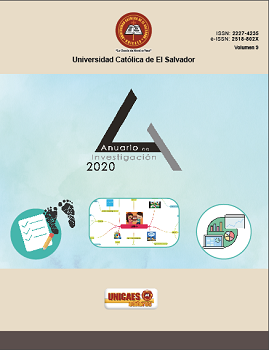Computer practice and English language learning
DOI:
https://doi.org/10.5377/aiunicaes.v9i0.10235Keywords:
CALL, practice, TOEIC, habit, frequency, comprehensionAbstract
The main objective of the study was to develop reading and audio practices through the computer so that students of Intermediate English I of the Bachelor of Arts with specialization in English Language from Universidad Católica de El Salvador, Multidisciplinary Faculty of Ilobasco, Cabañas, will develop their skills in vocabulary comprehension, reading and audio, in order to improve their performance on the standardized exam, TOEIC (Test of English for International Communication) The population of Intermediate English I students was divided into two groups: one group was control and the other was intervention. For this last group, a text and an audio were presented weekly. Based on them, tests of twelve questions (reading and listening comprehension) with different levels of difficulty were developed. As a result, 60% of the students exposed to the practices reached a score of 280 to 500 points on the TOEIC standardized test.
Downloads
526
Downloads
Published
How to Cite
Issue
Section
License
© Anuario de Investigaciones

Este obra está bajo una licencia de Creative Commons Reconocimiento 4.0 Internacional.

